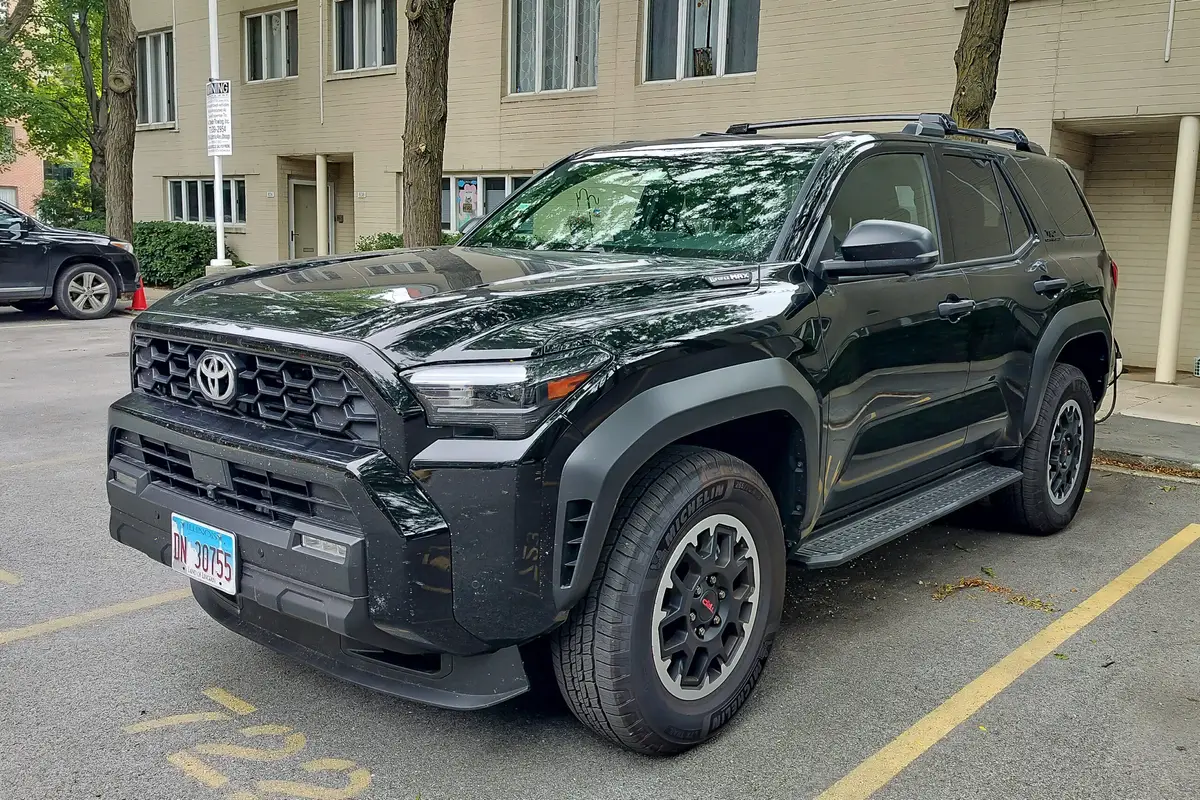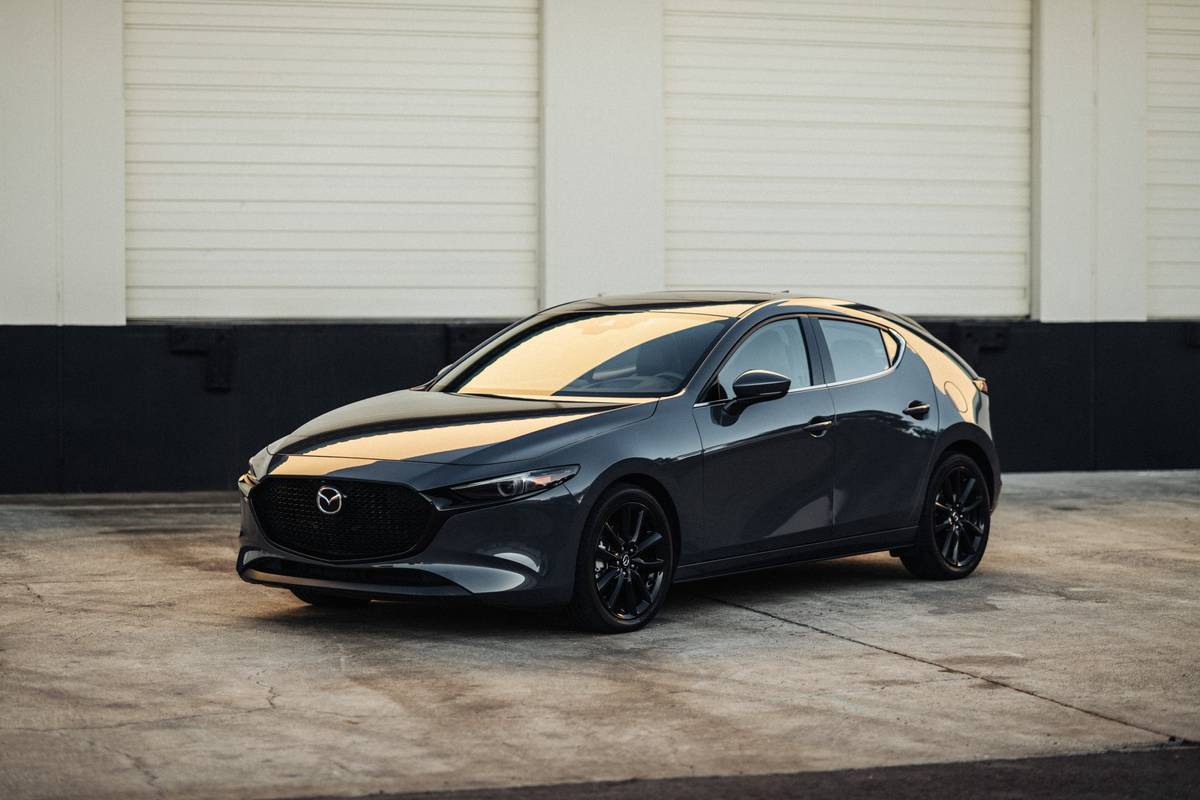Cincinnati.com's view
The Thunderbird gets an A+ on the babe-magnet meter. And why not – the chief engineer is a woman, Nancy Gioia, who knows what women like.
I had the top down and had paused at a stop sign, waiting for cross traffic to clear. A woman in a big pickup truck pulled up alongside, rolled down her window and gushed “Cute car!”
A day later, I ran into two women from the neighborhood. Both had seen me driving the rambunctiously red roadster in days preceding, and concurred with the earlier judgment: “Cute car!”.
That, as with most two-seaters, is what it’s all about – getting noticed, and hoping some of the car’s lan rubs off on its driver.
The Thunderbird has had a checkered history, devolving over the years from the Corvette-killer Ford Motor Co. unleashed in 1955 into a sometimes bloated Brandoesque parody of itself, until its ultimate retirement four years ago. But now it’s back, with plenty of retro styling cues but up-to-date mechanicals borrowed in large measure from current Lincoln LS and Jaguar S-type platforms – a powerful parley.
There’s no doubt in my mind that Ford will exceed its modest sales goal – a mere 25,000 units – for the 2002 model run and for some years thereafter. At those volumes, the car isn’t a profit center (except for dealers, who are having a ball price-gouging the early-acquirers), but, as it is for its drivers, so is it for the corporation, all about image.
The first thing you notice when approaching the new T’bird from the side is that, unlike most of the door-stopper-shaped sporty cars today, it’s higher in front than in back, as was its progenitor.
Of course if you approach from the front you’ll be overwhelmed by the anthropomorphic qualitiy of the grille treatment, which reminded me of a wide-eyed kid grinning past a few thousand dollars’ worth of orthodontic work.
Getting into the car, top in place, was my first uh-oh. I never was good at the limbo, even with a belly full of rum, but such contortions are required if you’re more than about 5 feet 8 inches tall. The top of the roof is a mere 52 inches from the ground, and the driver’s seat is perched relatively high, so a big lug gains entry only with considerable contortion.
Once aboard, I had a sufficiency of legroom and did not feel overly constrained laterally, either, given that it IS a sporty car, but headroom was nearly nonexistent.
Had the weather not been rather chilly during the test, that wouldn’t have been too much of an issue because lowering the power top is simple – unsnap the central latch and push a button. There’s no need even to bother lowering the side windows, as is often the case. The operation is quite swift, taking about 10 seconds. It’s unfortunate that Ford didn’t see fit to have the top stow itself under a metal hatch because it’s rather untidy looking. A tonneau cover is furnished, but who wants to mess with that, especially at this price range?
Raising the top is nearly as simple, but requires a bit of attention to make sure the top’s securing hooks mate properly with their retainers before the manual relatching takes place.
The rear window is glass, so it won’t yellow or crinkle, and is fitted with defroster wires.
A rigid top in body-matching color is optionally available (complete with signature “porthole” window, of course) for about $2,500 more and includes its own dolly for stowing in the corner of the garage.
Height again became an issue when I took to the road topless. At 6-1, I protruded into the windstream at least a couple of inches, even with the driver’s visor flipped up. Shorter people would make out better, because cabin buffeting even at freeway speeds is commendably low. My sinuses and scalp soon protested, however, so I buttoned it up, the better to appreciate how awful the rearward visibility is. At least the outside mirrors are large and well-placed.
The T’bird is indecently heavy for a two-seater – 3,775 pounds with canvas top – so it ds every cubic centimeter of its aluminum 3.9-liter, double-overhead-cam V-8, same as is used in the Jag.
The engine makes 252 hp way up at 6,100 rpm and 261 foot-pounds of torque at a sporty 4,300. It’s good that Ford furnishes a five-speed automatic to pass the power to the rear wheels (no manual, yet). This lets them use a fairly stout first gear and put the other ratios fairly close, to mitigate the lack of low-end grunt. Actual performance as measured by stopwatch was quite acceptable – down near 7 seconds in the 0-60 run.
Still, the engine doesn’t feel fully-engaged until the tach needle is well beyond 4,000, and from that point feels like an over-achieving four-banger rather than a muscular V-8. The old pushrod 289 had both better sound and better low-end kick.
The modern ‘bird’s exhaust sound is allegedly tuned for a sporty note, but I thought it sounded rather wimpy.
The recommended fuel is premium unleaded, 91 octane or better. EPA mileage estimates are 17 mpg city, 23 highway. Both a high coefficient of drag and the mass make it rather thirsty. I logged 19.8, keeping it on-cam much of the time.
The transmission is controlled via a console-mounted shifter. You can leave it in D5 all the time and it will behave pretty well. Or you can shift manually by pulling the lever back through progressive detents, 3-2-1. I had a very wild time once when I inadvertently went from 4 to 1 in a rapid step – the car executed the order, bringing the revs up to redline and causing a wild, slewing motion. I’d suggest they either make the detents more pronounced, or go to a gated arrangement, or pop, as most others do, for a license to use Porsche’s Tiptronic system.
Upshifts were almost undetectable, even with heavy throttle application, while forced downshifts were a bit clumsy.
Ride quality was very good, with a little shuddering over rough surfaces. That’s to be expected in a car that lacks the bracing of a steel roof, and the ‘bird, while not the best al fresco platform, rates a B+.
Road contact was quite assured, with hefty 235/50/17 rubber, V-rated for continuous running at up to 149 mph.
The big contact patch helped the serious four-wheel antilock-backed disc brakes do their job efficiently, with dramatically rapid deceleration from, shall we say, elevated velocities.
Handling was also quite good, though with an amount of road feedback more suited to a touring car than a sports car, ergo, apt for the T’bird. Steering was a little heavy at legal speeds, but fairly fast, and the car maintained a course down the freeway without the need for niggling corrections.
Ford didn’t skimp on the included stereo – an 8-speaker, 180-watt, AM-FM-cassette-6-CD unit. It offered exceptional clarity, enough power to conquer ambient noise at cruising speeds and reasonable presence. With the antenna buried in the windshield it was no champ at pulling in radio stations.
Neither the Feds nor insurance folks have crash-tested a T’bird, and aren’t likely to get to one this year, given its low volume. But with its mass and front and side air bags, it offers reasonable expectations of survivability unless you manage to roll it.
Build quality of my sample was quite good and both exterior and interior surfaces were commensurate with the price. The Thunderbird is made in Wixom, Mich. The T’bird is issued in two series, deluxe and premium, separated by a grand and chromed wheels, mainly. The premium I had started at $37,413. With the addition of a “black accent package” and freight, it listed at $38,206. Payments on such a toy would be $775, assuming 20 percent down, 10 percent interest and 48 installments. Here’s the really bad news. The analytical firm Edmunds says its buyer surveys show the ‘bird is going for a tidy $10,000 over the suggested retail price. That might be a good speculative investment, but it’s way too much for this car. I’ll stick with my fave, the 3.0-liter BMW Z3, and keep the 10G dif p>”The Gannett News Service”
Latest news



